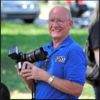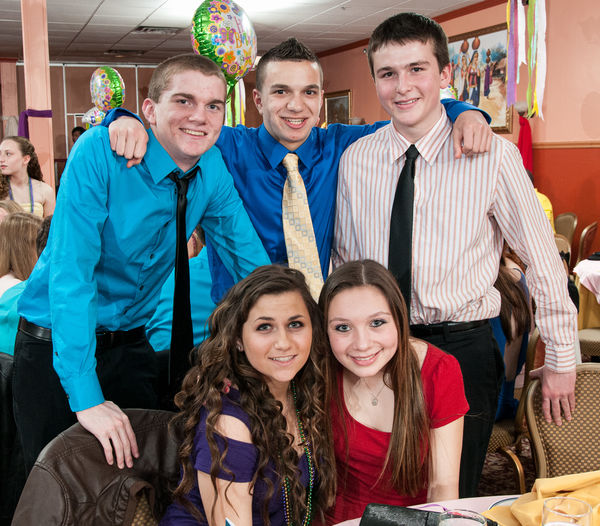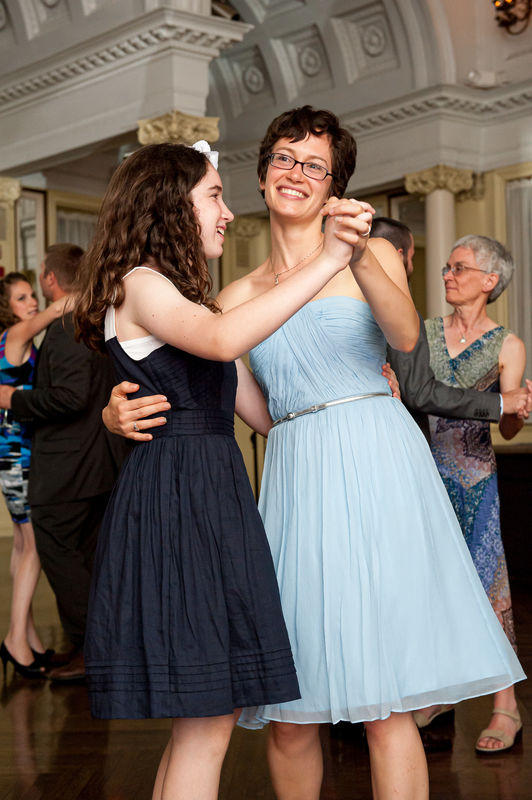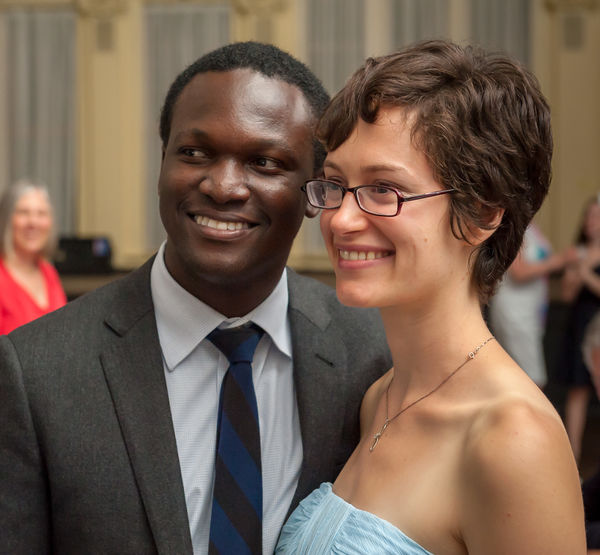Iso Questions
Sep 23, 2019 06:57:58 #
Hello Friends,
My question is about auto iso settings. In shooting indoors with my Canon 70 D and 60 D with top canon L lenses I have been avoiding flash. I use 160 or higher shutter and around 5.6 aperture in manual. The iso sometimes runs up to 3200 with some noise. In stepping up to another body would I have to go to a full-frame, or a different camera to get the higher iso? Setting suggestions would also be appreciated.
Thanks in advance
Mick
My question is about auto iso settings. In shooting indoors with my Canon 70 D and 60 D with top canon L lenses I have been avoiding flash. I use 160 or higher shutter and around 5.6 aperture in manual. The iso sometimes runs up to 3200 with some noise. In stepping up to another body would I have to go to a full-frame, or a different camera to get the higher iso? Setting suggestions would also be appreciated.
Thanks in advance
Mick
Sep 23, 2019 07:03:33 #
So you want to be able to shoot at higher ISO without so much noise. Yes, that would depend on the camera. Here's a link to a very good comparison site. You select the cameras you want to compare.
https://www.dpreview.com/articles/7774764205/fujifilm-x-t30-sony-a6400-added-to-studio-test-scene
https://www.dpreview.com/articles/7774764205/fujifilm-x-t30-sony-a6400-added-to-studio-test-scene
Sep 23, 2019 07:07:45 #
Mick 53 wrote:
Hello Friends,
My question is about auto iso settings. In shooting indoors with my Canon 70 D and 60 D with top canon L lenses I have been avoiding flash. I use 160 or higher shutter and around 5.6 aperture in manual. The iso sometimes runs up to 3200 with some noise. In stepping up to another body would I have to go to a full-frame, or a different camera to get the higher iso? Setting suggestions would also be appreciated.
Thanks in advance
Mick
My question is about auto iso settings. In shooting indoors with my Canon 70 D and 60 D with top canon L lenses I have been avoiding flash. I use 160 or higher shutter and around 5.6 aperture in manual. The iso sometimes runs up to 3200 with some noise. In stepping up to another body would I have to go to a full-frame, or a different camera to get the higher iso? Setting suggestions would also be appreciated.
Thanks in advance
Mick
Use tripod and increase shutter speed.
Sep 23, 2019 07:09:15 #
MMC wrote:
Use tripod and increase shutter speed.
If only that is possible! Some subjects don't stay still and some places prohibit tripod.
Sep 23, 2019 07:10:13 #
Sep 23, 2019 07:21:01 #
For both these EOS models, you should be following ETTR best practices, Exposing To The Right.
With the goal of minimizing the starting image noise prior to processing, you should be (a) shooting at the slowest shutter and (b) the widest aperture for the composition, (c) in RAW, that causes some blinking in the highlight alerts on the back of the camera. That is ETTR. The concept applies to JPEG too, but you need to be more careful about where and how much you allow those highlight alerts. A newer EOS model will provide better performance at higher ISOs, but the ETTR practice in RAW will maximize the results in all EOS DSLRs.
These two posts explain and demonstrate ETTR. Consider trying these techniques before investing in new cameras.
ETTR in Practice
ETTR in Practice II
With the goal of minimizing the starting image noise prior to processing, you should be (a) shooting at the slowest shutter and (b) the widest aperture for the composition, (c) in RAW, that causes some blinking in the highlight alerts on the back of the camera. That is ETTR. The concept applies to JPEG too, but you need to be more careful about where and how much you allow those highlight alerts. A newer EOS model will provide better performance at higher ISOs, but the ETTR practice in RAW will maximize the results in all EOS DSLRs.
These two posts explain and demonstrate ETTR. Consider trying these techniques before investing in new cameras.
ETTR in Practice
ETTR in Practice II
Sep 23, 2019 07:21:16 #
If using flash is possible, point it at ceiling (assuming it’s white) and use 100 iso. It will also allow for faster shutter speed, up to flash max synch speed.
Sep 23, 2019 07:32:00 #
Check out the high ISO performance on a used Nikon D3 or D3S camera. Built like tanks and with careful shopping you can find a lower shutter count for around $1000. Although only 12MP, I've had no problems with enlargements to 20x30.
Sep 23, 2019 07:38:47 #
CHG_CANON wrote:
For both these EOS models, you should be following... (show quote)
ETTR doesn't work when you don't have sufficient light.
Sep 23, 2019 07:41:08 #
BebuLamar wrote:
ETTR doesn't work when you don't have sufficient light.
You might review the examples in the two links above and reconsider your level of understanding of ETTR.
Sep 23, 2019 07:54:34 #
If you are using an L lens, you should be able to open the aperture a bit more depending on the lens. F/2.8 or f/4 will give you better results. I havent used the 60D or 70D camera. It might be they don't process high ISO very well. Also, if you have Image Stablization in your lenses you can drop the shutter speed some. Try 1/80 to 1/125. This shutter speed is very slow so be sure to steady yourself when shooting. When shooting this slow I use the technique of inhale, hold it, shoot, exhale. It works. If none of this works for you, there are a lot of programs out there that can remove some noise in your photos.
Sep 23, 2019 08:02:40 #
Mick 53 wrote:
Hello Friends,
My question is about auto iso settings. In shooting indoors with my Canon 70 D and 60 D with top canon L lenses I have been avoiding flash. I use 160 or higher shutter and around 5.6 aperture in manual. The iso sometimes runs up to 3200 with some noise. In stepping up to another body would I have to go to a full-frame, or a different camera to get the higher iso? Setting suggestions would also be appreciated.
Thanks in advance
Mick
My question is about auto iso settings. In shooting indoors with my Canon 70 D and 60 D with top canon L lenses I have been avoiding flash. I use 160 or higher shutter and around 5.6 aperture in manual. The iso sometimes runs up to 3200 with some noise. In stepping up to another body would I have to go to a full-frame, or a different camera to get the higher iso? Setting suggestions would also be appreciated.
Thanks in advance
Mick
You'll get better results if you use bounce flash indoors. This way you have a bit more control over lighting direction and quality. Unless you are converting your images to black and white, relying on indoor lighting will give you unpredictable results.
However, "shooting indoors" can mean anything. Can you post a sample of what you are trying to address? Or provide more information?
The first example below was in a restaurant where I installed a number of speedlights ahead of time in and around chandeliers and wall sconces and bounced the light from adjoining wall surfaces. In essence I replaced the uneven ambient lighting with my own. I think I use 8 speedlights for this and 12 mp Nikon D300, 1/80 sec, F5.6, ISO 800.
The second two images were done with a D700. I had a single speedlight, pointed either at the ceiling or over my shoulder. I used ISO 1600, 1/260 sec, F5.6 for both shots.
Sep 23, 2019 08:04:03 #
Mick 53 wrote:
Hello Friends,
My question is about auto iso settings. In shooting indoors with my Canon 70 D and 60 D with top canon L lenses I have been avoiding flash. I use 160 or higher shutter and around 5.6 aperture in manual. The iso sometimes runs up to 3200 with some noise. In stepping up to another body would I have to go to a full-frame, or a different camera to get the higher iso? Setting suggestions would also be appreciated.
Thanks in advance
Mick
My question is about auto iso settings. In shooting indoors with my Canon 70 D and 60 D with top canon L lenses I have been avoiding flash. I use 160 or higher shutter and around 5.6 aperture in manual. The iso sometimes runs up to 3200 with some noise. In stepping up to another body would I have to go to a full-frame, or a different camera to get the higher iso? Setting suggestions would also be appreciated.
Thanks in advance
Mick
I have found the DxOMark "sports" score to accurately how different systems handle high ISO. You should note that higher ISO not only creates noise, it also reduces Dynamic Range and reduces Color Depth.
https://www.dxomark.com/Cameras/
Sep 23, 2019 08:07:22 #
Gene51 wrote:
This is true if you can take over their lighting or they have a white ceiling. The places I ran into trouble are those that are too large for me to light, have a very high ceiling, or a dark/colored ceiling.You'll get better results if you use bounce flash ... (show quote)
Sep 23, 2019 08:56:13 #
CHG_CANON wrote:
For both these EOS models, you should be following... (show quote)
Wow, I feel I just attended a much needed class on ETTR. I've always been curious about what that entails and you have done an excellent job of helping me with this technique. Thank you so much for taking the time to help those of us develop a much better understanding of this sport.
If you want to reply, then register here. Registration is free and your account is created instantly, so you can post right away.












